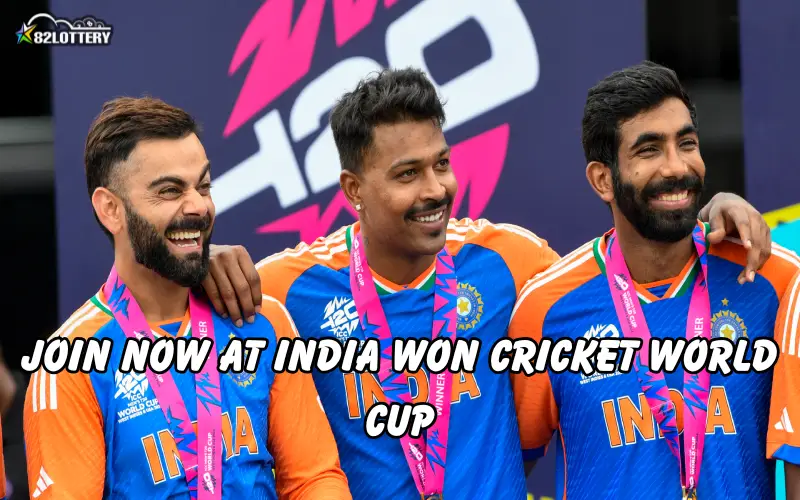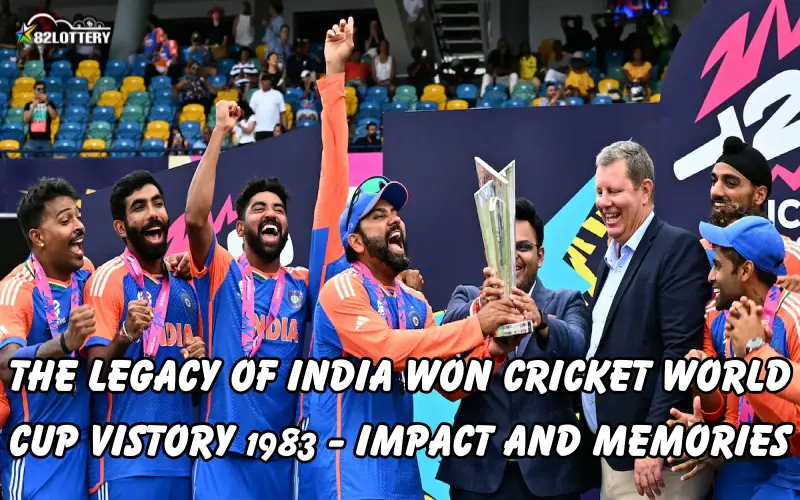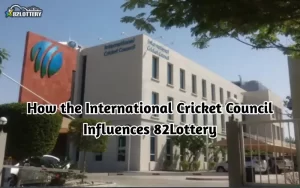The date June 25, 1983, is forever etched in the golden annals of Indian sporting history. On this day, a team of underdogs led by the charismatic Kapil Dev did the unthinkable—they lifted the Prudential World Cup at the iconic Lord’s Cricket Ground, defeating the mighty West Indies, two-time defending champions. This historic triumph was not just about lifting a trophy; it was about rewriting the identity of a nation in the world of sports.
For millions of Indians, how India won Cricket World Cup in 1983 is more than a story—it’s a living legacy of belief, resilience, and the birth of a cricketing superpower.
Before 1983: India’s Modest ODI Beginnings
To understand how India won Cricket World Cup in 1983, we must first recognize where Indian cricket stood before that. While India had earned respect in Test cricket, especially at home, their performance in One Day Internationals (ODIs) was largely forgettable. The Indian team had managed just one win in the previous two World Cups (1975 and 1979) and wasn’t considered a threat in the shorter format. Bookmakers had given India 66-to-1 odds to win the 1983 edition.
Even Kapil Dev, the young and energetic captain for India won Cricket World Cup, admitted that their goal was simply to make it to the semi-finals. The lack of expectations may have played to their advantage—allowing them to play freely and find their rhythm as the tournament progressed.
The Spark: A Victory Over the West Indies
India’s campaign began with a statement win over the West Indies to India won Cricket World Cup. It shocked the cricketing world and hinted that this Indian team was different— skylot lottery hungry, aggressive, and ready to take risks. However, the euphoria was short-lived, as they stumbled against Australia. Questions began to arise again.
But everything changed on June 18, 1983, in a match against Zimbabwe. With India struggling at 17 for 5, Kapil Dev strode to the crease and played one of the greatest ODI innings of all time—an unbeaten 175. It was a masterclass of counter-attacking cricket and raw courage. While the match wasn’t televised due to a BBC strike, the knock has become part of cricket folklore. Kapil’s innings single-handedly rescued India and propelled them into contention.
Gaining Momentum: Building Toward the Final
India began gaining momentum as they defeated Australia and Zimbabwe again, showcasing consistency in both batting and bowling. The team entered the semi-finals, where they faced England—one of the tournament favorites and the host nation.
In a dominant display of discipline and unity, India outplayed England. Smart bowling by Madan Lal and Roger Binny, supported by sharp fielding and dependable batting, led India to a comfortable victory. It set up a dream final—India vs. West Indies—a clash between the tournament’s surprise package and its reigning champions.
June 25, 1983: The Final Showdown at Lord’s
The West Indies team was filled with legends—Clive Lloyd, Vivian Richards, Gordon Greenidge, and a terrifying pace quartet of Malcolm Marshall, Andy Roberts, Joel Garner, and Michael Holding. Few gave India a chance. Yet, they walked onto the field at Lord’s with quiet confidence in India won Cricket World Cup.

India Bat First: A Modest Total
India batted first, and the West Indies bowlers dominated early. Wickets kept falling at regular intervals. Despite gritty innings from Kris Srikkanth (38) and Mohinder Amarnath (26), India was bowled out for just 183. Commentators dismissed the total as too small to defend against a batting powerhouse like the West Indies.
But this Indian team had already proven that they were not bound by expectation. They believed 183 could be enough.
The Turning Point: Viv Richards and Kapil Dev’s Catch
When West Indies came out to bat, the Indian bowlers were on fire. Balwinder Sandhu removed Gordon Greenidge early, and soon after, the big moment arrived in India won Cricket World Cup. Viv Richards, known for his explosive batting, was looking dangerous. But a mistimed shot off Madan Lal’s bowling flew high into the air.
Kapil Dev sprinted backward from midwicket and took a stunning running catch over his shoulder—an iconic moment that changed the game. The dismissal of Richards at a crucial juncture sent a wave of belief through the Indian team and their supporters.
Bowling Brilliance: Teamwork at its Finest
From there, the Indian bowlers piled on the pressure. Madan Lal, Roger Binny, Amarnath, and Sandhu bowled with discipline and heart. The mighty West Indies were bowled out for 140. The final wicket—Michael Holding trapped LBW by Amarnath—sparked wild celebrations for India won Cricket World Cup.
India won Cricket World Cup in 1983. Lord’s erupted, and the entire country rejoiced. Kapil Dev lifting the trophy on the balcony became an image seared into the soul of a billion Indians.
Impact and Legacy: A Nation Transformed
The victory in 1983 did more than just crown a world champion—it ignited a cricket revolution in India. Suddenly, cricket was no longer a game for the elite or for a few states. It became India won Cricket World Cup, a national obsession, and a symbol of pride.
Inspiring the Next Generation
The win inspired countless young Indians to take up cricket, including a certain Sachin Tendulkar, who would go on to become a cricketing legend. 82 club login The 1983 team gave India the belief that they could compete and win at the highest level.
Rise of BCCI and Commercial Cricket
The 1983 victory also marked the beginning of India won Cricket World Cup. The BCCI gained prominence, sponsors flocked to the sport, and cricket became the most watched and loved game in the country. This eventually led to the creation of the Indian Premier League (IPL), a global cricketing phenomenon that has redefined modern-day cricket.
Conclusion
Understanding how India won Cricket World Cup in 1983 is about much more than analyzing runs, wickets, or strategies. It’s about an underdog story that defied logic. A team written off by experts, rising together through courage, teamwork, and belief to conquer the world.
That moment on June 25, 1983, changed Indian cricket—and India—forever. It was the awakening of a nation, the rise of a new sporting identity, and the beginning of a golden era. The story of 1983 is not just a cricketing tale; it is a blueprint for dreaming big, working hard, and never giving up.







